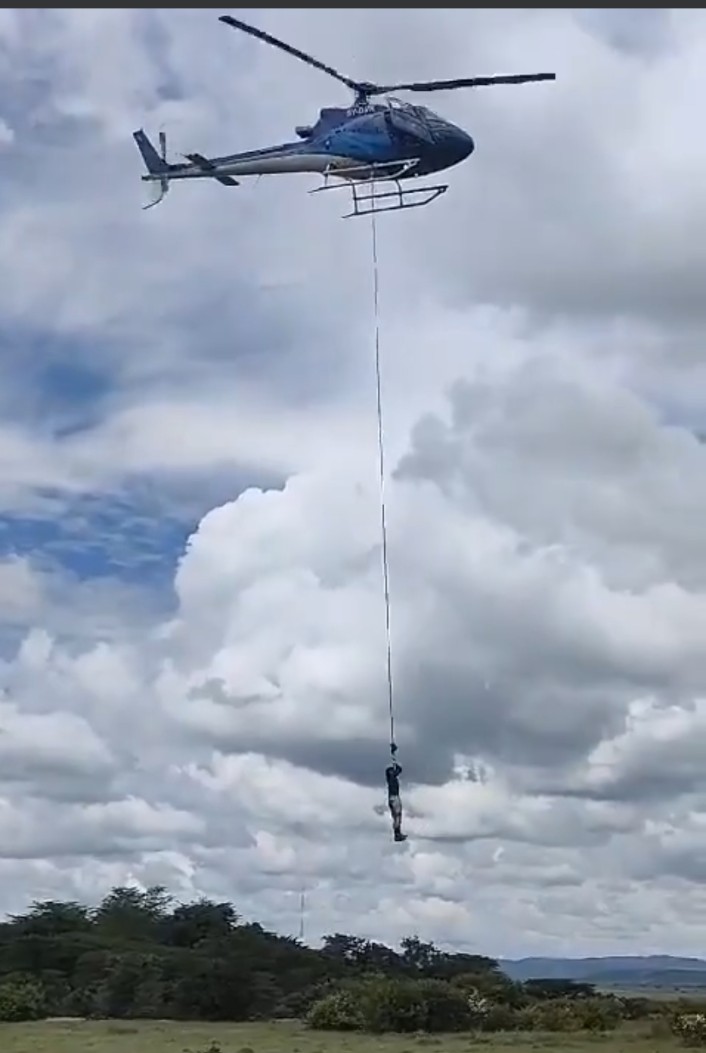The torrential downpour pounded relentlessly against the rugged terrain of Maasai Mara, a sanctuary of unparalleled natural beauty and home to some of Africa’s most iconic wildlife. The Talek River, usually a serene lifeline weaving through the landscape, had been transformed into a raging force of nature, its banks bursting under the weight of the relentless deluge.
In the dead of night, as the clock struck midnight, a deafening roar shattered the tranquility of the wilderness. It was the sound of chaos unleashed, the river breaking free from its earthly confines and unleashing its fury upon the unsuspecting inhabitants of the tourist camps nestled along its banks.
Within moments, the tranquil sanctuaries of the lodges, tents, and campsites were engulfed by the merciless floodwaters, transforming the once serene landscape into a scene of chaos and desperation. Workers and tourists alike were rudely awakened from their slumber by the ominous sound of rushing water, their senses jolted into action as they scrambled to comprehend the unfolding disaster.
Panic gripped the air as people frantically sought refuge from the advancing tide, their minds racing with fear and uncertainty. In the darkness, illuminated only by the occasional flash of lightning, the scale of the calamity became painfully clear. The floodwaters showed no mercy as they surged through the narrow corridors of the camps, swallowing everything in their path with relentless determination.
Amidst the chaos, the valiant efforts of the Narok county government shone brightly, as they swiftly mobilized resources to aid in the evacuation efforts. Two choppers, their rotor blades slicing through the stormy night sky, became beacons of hope for those trapped amidst the rising waters. With unwavering determination, the rescue teams navigated through the treacherous conditions, risking their own safety to reach those in need.
For the stranded tourists, the choppers represented their only lifeline amidst the swirling chaos. As they hovered overhead, casting an eerie glow upon the flooded landscape below, a sense of relief washed over those who had feared they would be left to the mercy of the merciless river. With each daring rescue, hope was renewed and faith in humanity restored, as strangers banded together in a desperate bid for survival.
But amidst the heroism and bravery, there was also heartache and loss. As the floodwaters receded and the dawn broke upon the ravaged landscape, the true extent of the devastation became painfully clear. Lives had been lost, livelihoods destroyed, and dreams washed away in the relentless torrent.
Yet, amidst the wreckage, there remained a glimmer of hope – a testament to the resilience of the human spirit in the face of adversity. As the community rallied together to rebuild what had been lost, their bonds strengthened by the shared trauma of the disaster, a new sense of unity emerged from the chaos.
In the aftermath of the flood, as the sun cast its golden rays upon the rejuvenated landscape, the scars of the disaster served as a reminder of the fragility of life and the power of nature. But amidst the ruins, there remained a sense of defiance – a determination to rise from the ashes and rebuild stronger than before.
And so, as the waters of the Talek River once again flowed peacefully through the heart of Maasai Mara, the echoes of the night’s chaos began to fade into memory. But the lessons learned would endure, etched into the collective consciousness of all who had witnessed the awesome power of nature unleashed.
As the first light of dawn pierced through the dissipating storm clouds, revealing the extent of the devastation wrought by the floodwaters, a somber mood settled over the once vibrant landscape of Maasai Mara. The debris-strewn campsites and waterlogged lodges bore witness to the ferocity of the previous night’s deluge, serving as stark reminders of the fragility of human existence in the face of nature’s fury.
For the survivors, the ordeal was far from over. With their belongings lost to the merciless waters and their sense of security shattered by the events of the night, they faced the daunting task of rebuilding their lives from the ground up. But amidst the rubble, there remained a glimmer of hope – a resilience born from the depths of adversity and a determination to overcome even the greatest of challenges.
In the days that followed, a sense of camaraderie emerged amongst the survivors as they banded together to support one another in their time of need. makeshift shelters were erected from salvaged materials, and communal kitchens sprung up to provide nourishment to those who had lost everything. In the face of overwhelming loss, the human spirit prevailed, forging bonds that transcended language and culture.
Meanwhile, the Red Cross and other relief organizations worked tirelessly to provide aid to the affected communities. Medical teams tended to the injured, while volunteers distributed food, water, and other essential supplies to those in need. Their presence brought a sense of reassurance amidst the chaos, reminding the survivors that they were not alone in their struggle.
But even as the immediate needs of the survivors were being addressed, questions lingered about the events that had led to the disaster. The heavy rains that had triggered the flood were not an anomaly in this region, yet the scale of the devastation seemed unprecedented. Had proper precautions been taken to mitigate the risk of such an event? Were there warning signs that had gone unheeded?
As investigations got underway, attention turned to the delicate balance between human development and the natural environment. The rapid expansion of tourist infrastructure along the banks of the Talek River had undoubtedly altered the landscape, increasing the vulnerability of the area to flooding. But with tourism serving as a vital source of income for the local communities, finding a sustainable solution would require careful consideration and collaboration amongst all stakeholders.
In the midst of the tragedy, there were also moments of profound beauty and resilience. The wildlife of Maasai Mara, seemingly unfazed by the chaos unfolding around them, continued their timeless rituals, reminding all who bore witness of the enduring power of nature. And amidst the ruins of the tourist camps, stories of heroism and selflessness emerged – tales of individuals risking their own lives to save others, and communities coming together in the face of adversity.
As the waters receded and life began to return to normal, the scars left by the flood would serve as a poignant reminder of the fragility of existence and the resilience of the human spirit. But amidst the wreckage, there remained a sense of hope – a belief that from the ashes of destruction, a stronger, more resilient community would emerge, ready to face whatever challenges the future may hold.

